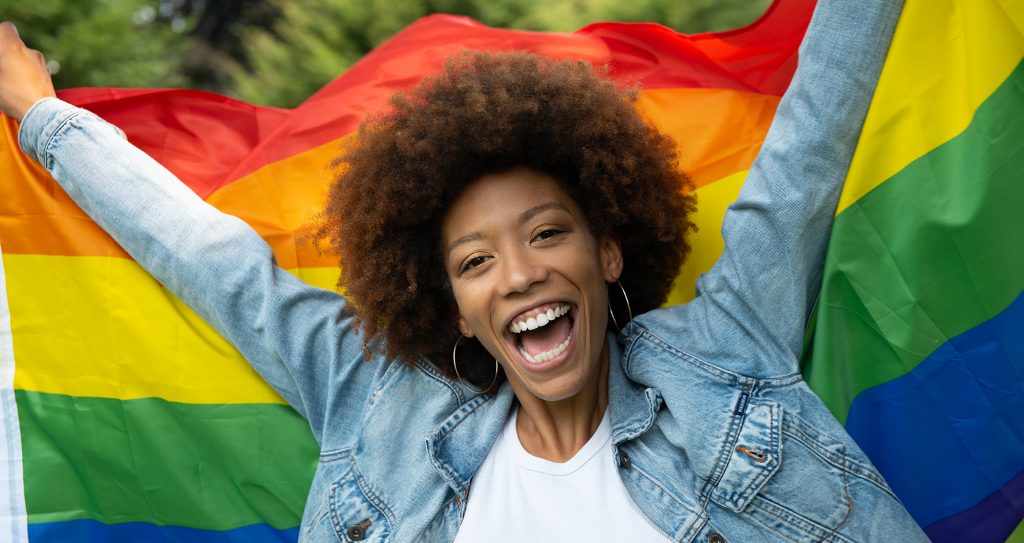
Over the past decade, Australia has seen positive improvements to inclusivity in the workplace, and health, social and community services have grown to be more welcoming of people of diverse sexuality and genders. Despite these improvements, the health sector has further steps to take in understanding the health disparities faced by the LGBTQIA+ community and providing culturally safe, gender-affirming health care. Unfortunately, the health system often excludes information on sexuality or gender diversity, which makes it challenging to meet the needs of LGBTQIA+ patients. Many patients with diverse genders or sexualities struggle to find inclusive health services and avoid seeking medical treatment out of fear of mistreatment.
Of particular concern are the mental health statistics for LGBTQIA+ people. Current data shows that almost two-thirds of LGBTQIA+ young people have been diagnosed with a mental health condition1. LGBTQIA+ people aged 16 to 27 are five times more likely to have attempted suicide than other young people in their age group2, and one in two transgender youths have attempted to take their own life3. These alarming figures highlight the need for a more inclusive health system that supports all sexualities and gender identities.
Research shows that capacity building and education of primary care clinicians to promote inclusivity, is one of the most effective interventions to reduce LGBTQIA+ suicide rates and ensure continued trust in the health system.
What can you do?
- Train staff:
- Take NSW STI’s one-hour e-module, Becoming More Gay Friendly in Your Practice
- Enrol in ACON’s LGBTQ Introduction eLearning for GPs
- Read QLife’s QGuides for health professionals working with LGBTQIA+ patients
- Use inclusive language: provide affirmative care to patients when discussing sexuality or gender and check how people identify before making assumptions
- Make health forms inclusive: include non-binary options on forms and take note of preferred gender markers, names and pronouns on patient records
- Promote your practice as LGBTQIA-inclusive: use welcome posters, LGBT flags or stickers to symbolise safety and respect, and highlight inclusivity policies on your website
- Develop inclusion or diversity policies: both for patients and staff
Resources for LGBTQIA+ patients:
- QLife: provides anonymous peer support and referrals for LGBTQIA+ individuals, their friends and families, and health professionals. The services are free and include both telephone and webchat support, delivered by trained LGBTQIA+ community members across the country
- Twenty10: the NSW provider for the QLife project and offers additional housing, mental health, counselling and social support to 12-25-year-olds.
- ACON: community health, inclusion and HIV responses for people of diverse sexualities and genders
- Qheadspace: a mental health community forum for LGBTQIA+ individuals
Spotlight on STARTTS
Over 20% of transgender and gender diverse people aged over 18 were born overseas4. Many LGBTIQA+ people express tensions or conflict between their cultural background and their sexuality or gender identity. The NSW Service for the Treatment and Rehabilitation of Torture and Trauma Survivors (STARTTS) provides culturally appropriate psychological treatment, support and community interventions to refugees and migrants.
In 2020, WentWest supported the pilot and launch of the STARTTS LGBTQIA+ program. STARTTS LGBTQIA+ aims to address the specific needs of LGBTQIA+ clients with refugee and asylum seeker backgrounds through building strengths and resilience and promoting self-help. STARTTS staff focus on supporting those who have suffered persecution due to their sexuality, or have come out after arriving in Australia. Service users have reported that existing migrant and refugee services have a limited understanding of LGBTQIA+ issues, and LGBTQIA+ organisations struggle to offer culturally and trauma-aware services to refugees. The STARTTS project delivers psycho-education and wellbeing interventions for LGBTQIA+ community members to help reduce the stigma around seeking mental health support.
Creating respectful, welcoming environments for patients of all gender identities and sexual orientations is paramount in improving mental health in Western Sydney. We have a responsibility as primary care providers to ensure that barriers to accessing quality care can be overcome.
Read more on this topic in RACGP’s article, An Open Environment.
1 and 3. Hill et Al (2021) ‘4: The health and wellbeing of LGBTQA+ young people in Australia’ in Writing themselves in, Melbourne, Australia: Australian Research Centre in Sex, Health and Society, La Trobe University, cited in LGBTIQ+ Health Australia (2021), Snapshot of Mental Health and Suicide Prevention Statistics for LGBTIQ+ People
2. LGBTIQ+ Health Australia (2021), Snapshot of Mental Health and Suicide Prevention Statistics for LGBTIQ+ People
4. Hyde et al (2014), The first Australian national trans mental health study: Summary of results, Perth, Australia: School of Public Health, Curtin University, cited in, LGBTIQ+ Health Australia (2021), Snapshot of Mental Health and Suicide Prevention Statistics for LGBTIQ+ People